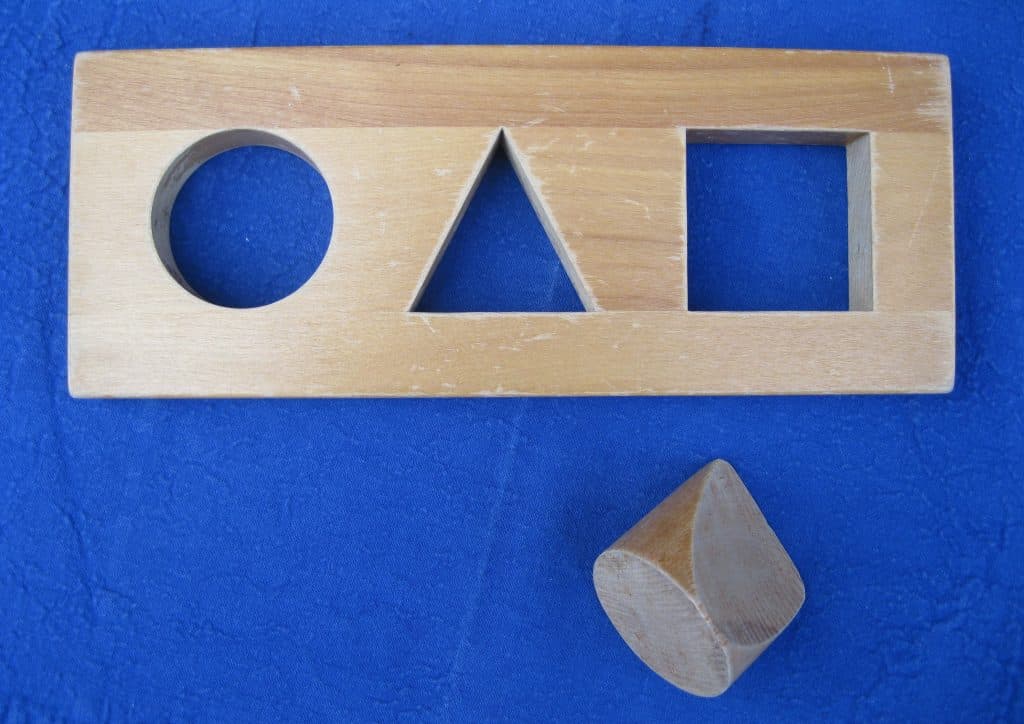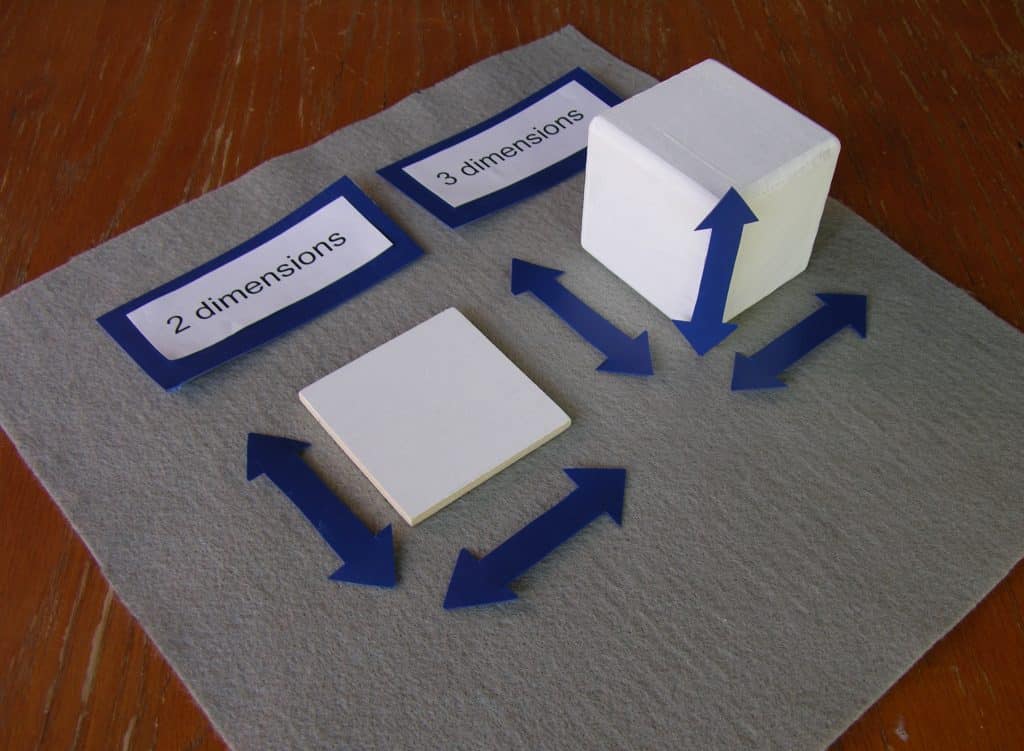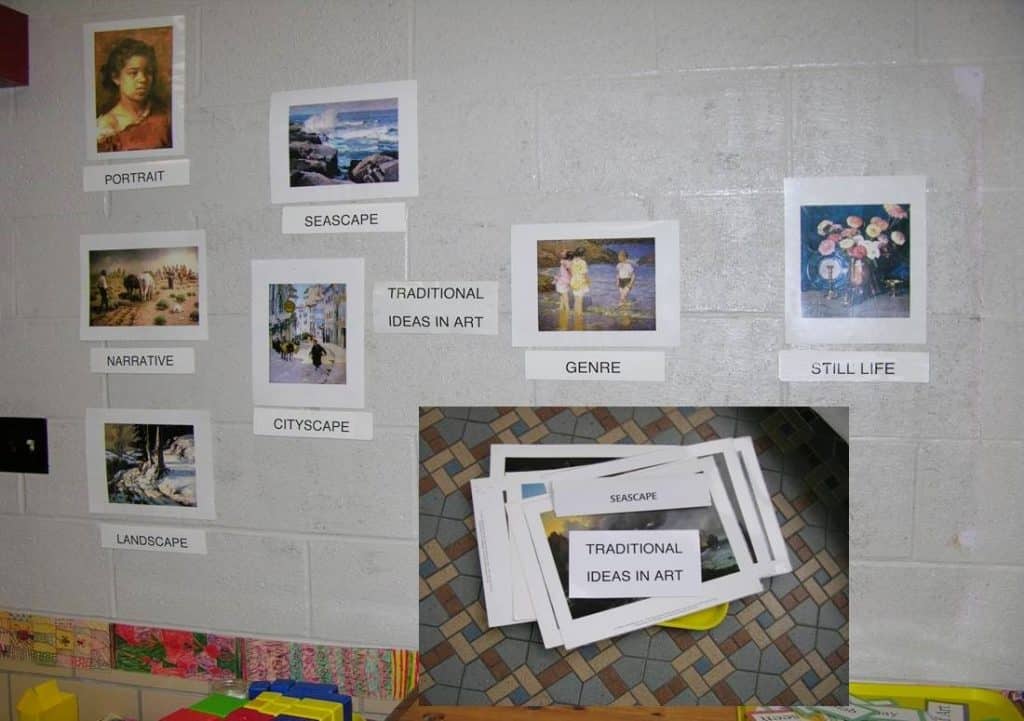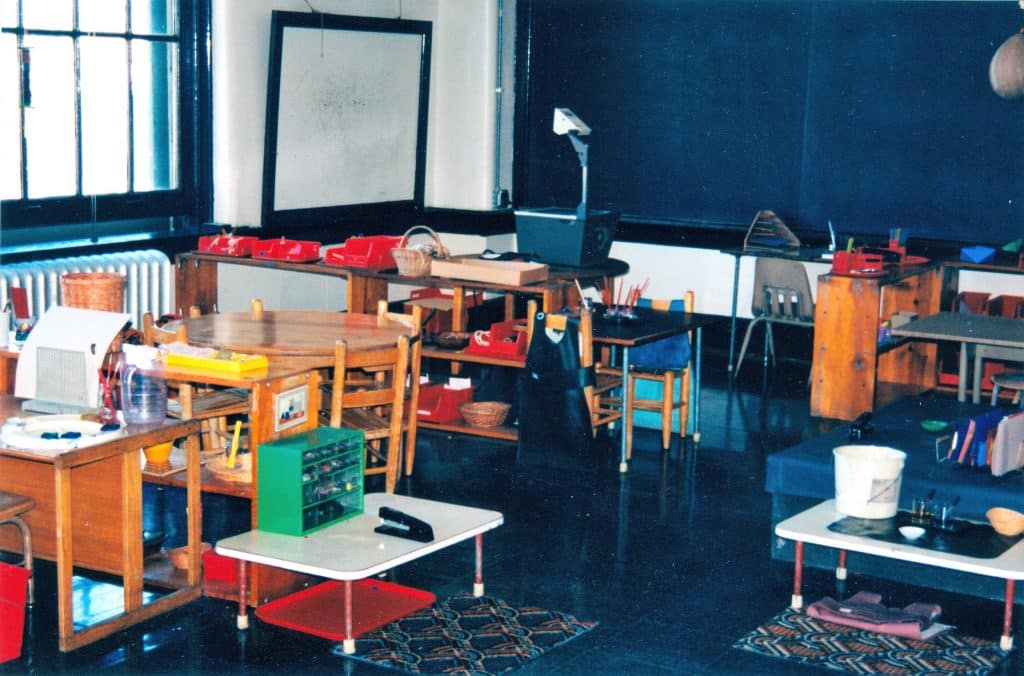
The Montessori-trained Art Specialist
There are great advantages to having a Montessori-trained art teacher in two dedicated studio environments servicing the whole school. This is a situation for which I will always advocate. Having studied the general curriculum allows the specialist to create rich environments that fit the needs of each level she is teaching. The environment is totally devoted to art education. Each part of the MAM curriculum is always present in some form either as lessons, didactic materials, or as opportunities to make art, all of which can be chosen by the children. Like the general curriculum, the teacher has three years in which to cover the MAM art curriculum. The structure of each day is a constant element (See: The Environment) so the children know how to use their day wisely. Ideally there needs to be three environments (studios), one studio is needed for Kindergarten people and the same space is used for the 6-9 year olds. The materials for each level are switched back and forth. One level’s activities are in storage while the other is being used. The 9-12 child needs a larger space that is only for them. By that age, the children are capable of making artwork that is complex and sophisticated. Regardless of age group, there are always 10-25 different art forms in the studio. This situation makes it easier for the specialist to do large and all-school projects. The art studios look like a Montessori environment. The sink area is surrounded by art forms, daily living exercises, and special work activities (academic) that require water. The other areas of the studio(s) are occupied by non-water art forms and academic materials.
As an additional benefit of having an art specialist, teachers would have an in-school planning time while their children were in the art studio. They could use the time to observe other teachers for their professional growth, to observe their children in a different learning environment, or to work in their own environment.
Note: An assistant teacher is needed in the studio at all times for safety, preparation, and instruction. The specialist must train the assistant using that person’s strengths. The specialist’s main lessons act as part of the assistant’s training. When in training, the assistant needs time to shadow the specialist and to sit quietly and learn to observe.
The advantage of having an art specialist would be small if the person is not Montessori trained. The traditional method of art education, by the nature of its design, limits the freedom of the learner’s movements and choice of work.
Space may be lacking for school studios. The cost of another teacher, equipment, and art materials may be too great, especially if the spaces would need to be renovated to accommodate water.
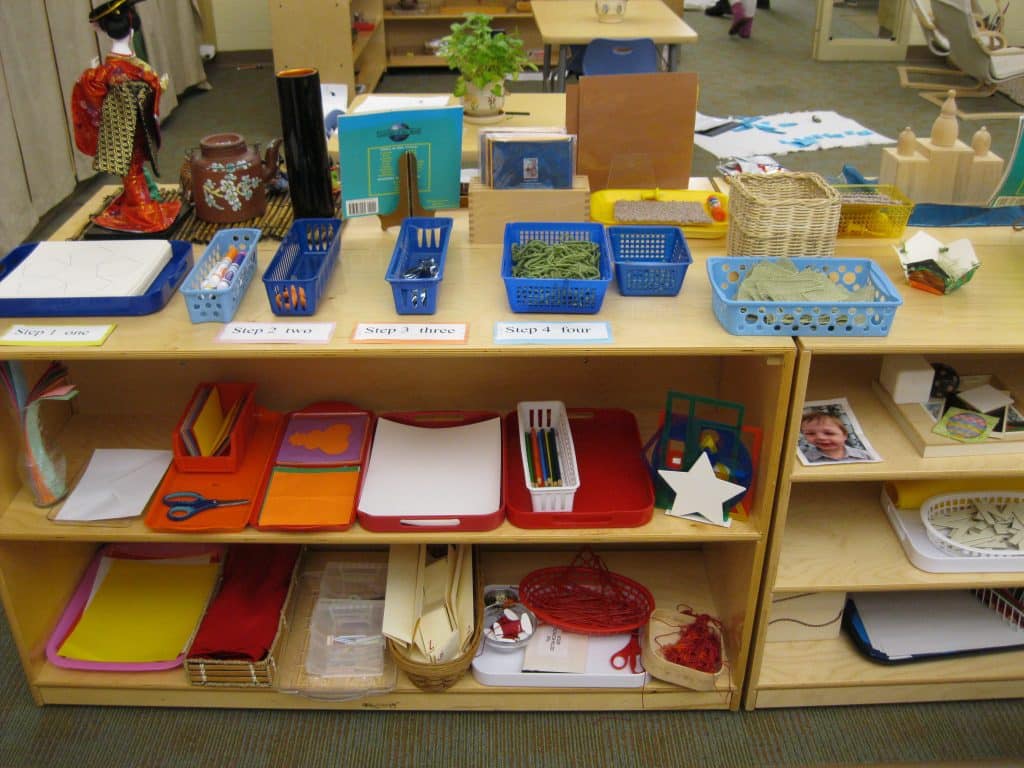
The Generalist Art Teacher
Using the MAM curriculum, the advantages of having art education delivered by the Montessori generalist could be as numerous as those of having a trained Montessori art teacher. The classroom teacher knows her children well, can gauge their interests easily, and can integrate the art opportunities as she plans the rest of the areas of the curriculum. The integration of art education into the environment would be seamless. The teacher would be educated by the MAM curriculum along with the children.
Parents may be eager to help with work that is usually done by a specialist. They may even be a resource for new information or new work. They may wish to help with other aspects of an art program such as fund-raising, matting and mounting artwork, hanging finished work, organizing art shows in the school or in outside venues. Parents possess the skills to make learning materials and specialized furniture, aprons and mats. They can help prepare students to see a museum show or chaperone the trip, and even help create art workshops for parents and children.
Some disadvantages to a non-specialist art program can also be present. The classroom may have limited space for art activities. The art program will only be as good as the level of skill the classroom teacher possesses in teaching art. Increasing that skill may not be a teacher’s priority. The teacher may have had little exposure to art making in their own education, so might be unable to appreciate its importance in exposing children to their own intrinsic creative abilities.
The work available to the students may depend on the teacher’s tolerance for or ability to organize the messiness inherent in the process of making art. A lack of a readily available source of water might also limit what a teacher can tolerate in the environment.
Art activities, like those of daily living, require high maintenance. This factor alone may discourage teachers from jumping out of their comfort zone, since they may already have so many demands for their time and attention. The Montessori Art Mentor program is designed to minimize challenges and enhance the experience of teaching art for the generalist and the specialist alike.
GEORGIE STORY
I had the experience of going into a generalist environment and giving short lessons in our school’s first environment set up for 3 and 4 year olds. I had to do the work on my own in-school planning time. As soon as the lesson was over, I returned to my work in the studio. Neither the teacher nor I spent much time planning together. I had great fun, however I would hardly qualify those short lessons as being a serious art education program. I just added to what she did. When the school had three environments for 3 and 4 year olds, I invited each class to come to the kindergarten studio for an hour on my own in-school planning time. At the time I still had an excellent assistant teacher who was able to make sure I was ready for my next scheduled classes. However, the last five years of my career I managed the whole art program without an assistant. Had I not been intending to retire soon anyway, I would have burned out in that amount of time. All Montessori art teachers need a full-time assistant.
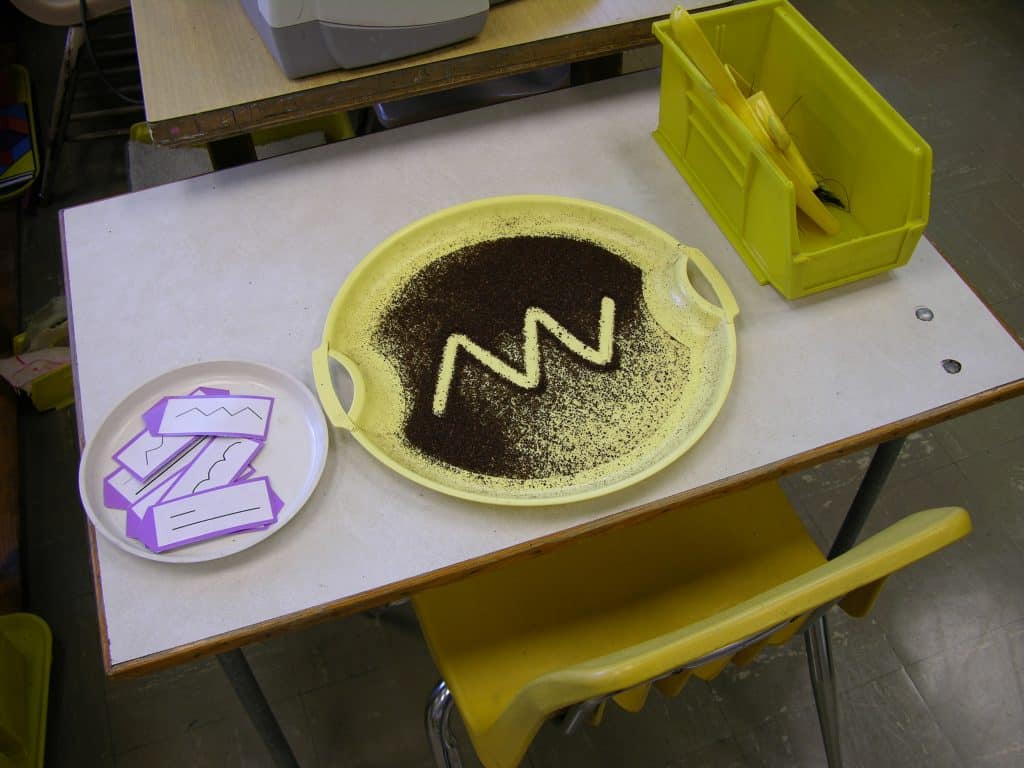 Art education within the Montessori Method has qualities that are different from other approaches to teaching the visual arts. The philosophy, the principles, and the practices of Montessori Education are quite unique. Children in multi-aged groups are educated in a prepared environment where they are taught how to choose and do work from a rich array of activities. They are given new lessons as they progress through the available ones. Children naturally repeat activities until they are no longer interested. All activities have been chosen by the teacher as appropriate and able to meet the needs for that group of children. The curriculum created by the Montessori Art Mentor seamlessly blends to the rest of the environment as each didactic material, structured activity, or lesson isolates the difficulty of what is being learned. One activity indirectly prepares the learner to use that information for the next, more complex activity that succeeds it. More than one way to structure a concept is presented as a “parallel activity,” so as to increase the likelihood that it will be understood and applied to the next level of difficulty. Many activities have built in controls so that the child can discover their own errors. The answers for other activities are present in plain view so that the students can research the answer and check their work independently. The environment changes and grows as the year progresses, based on the teacher’s observations of the children as they work. Art activities and lessons will be much more interesting and effective when enhanced by these Montessori principles.
Children start with lessons that involve real, concrete objects. They experience a concept in concrete form before being introduced to the abstract meaning the materials embody. The young child is interested in the process of the activity and only becomes product oriented later. There are “sensitive periods” for each level of education. When children seem more able to master certain skills and kinds of information, the teacher uses these periods to design an appropriate environment for them. There are key lessons that introduce large studies to which the individual classroom activities relate. These key lessons serve as a reference point since the study may last for a long period. Charts and diagrams are often used to organize an enquiry, and often illustrate information by analogy.
In the Montessori Art Mentor (MAM) curriculum, children are supported in finding their own ideas and how to make art from preschool on. They are continuously presented with affirmations that enhance their ability to call upon their own interests and sensitivities as sources for self expression (See: Generating Personal Ideas). Over time the children are given lessons and activities that help them to use their own ideas. Teachers are given help so that druring a presentation the teacher can share with his students how he arrived at his idea.
The children are given the opportunity to create individual works of art, and to plan and create works as a group where everyone’s input is accepted. Children will agree with and accept an idea even if it is not their own. They seem to understand what is best for the whole. Remember, a group of children is able to plan an idea that may be beyond your abilities, and you may need to seek help from other adults in order to make it happen. Enjoy the stretch.
Like the general curriculum, art education has a different emphasis for early education and for elementary education. Even within the elementary level, the emphasis changes as the students mature. Early education centers on building skills, exploring a large number of media, and introducing art concepts with concrete learning materials which will be important for later learning. The foundation is laid in early education. Elementary students continue to be highly creative with materials and processes because of the opportunity they have to explore a variety of media over time. In general, the responsibility for original ideas and self-directed production of artworks starts in preprimary. Over time, the role of the teacher becomes more and more of a support system for the students rather than an originator of work. Like other parts of the Montessori curriculum, students team up to help each other using their complementary skills.
Montessori art education stimulates artworks which are highly personal expressions of creative thought and which are truly the product of spontaneous activity. The MAM curriculum art activities can be presented in the environment concomitantly with the rest of the curriculum, or can be presented in a studio designed by a Montessori trained art specialist. Either way, children discover the connections between the concepts of art and concepts from other disciplines. Likewise, the artwork can be used to show evidence of learning in other disciplines.
Note: The MAM curriculum reflects the principles and practices of Montessori Education. Without the integrity of the method, art becomes nothing more than busy work.
Art education within the Montessori Method has qualities that are different from other approaches to teaching the visual arts. The philosophy, the principles, and the practices of Montessori Education are quite unique. Children in multi-aged groups are educated in a prepared environment where they are taught how to choose and do work from a rich array of activities. They are given new lessons as they progress through the available ones. Children naturally repeat activities until they are no longer interested. All activities have been chosen by the teacher as appropriate and able to meet the needs for that group of children. The curriculum created by the Montessori Art Mentor seamlessly blends to the rest of the environment as each didactic material, structured activity, or lesson isolates the difficulty of what is being learned. One activity indirectly prepares the learner to use that information for the next, more complex activity that succeeds it. More than one way to structure a concept is presented as a “parallel activity,” so as to increase the likelihood that it will be understood and applied to the next level of difficulty. Many activities have built in controls so that the child can discover their own errors. The answers for other activities are present in plain view so that the students can research the answer and check their work independently. The environment changes and grows as the year progresses, based on the teacher’s observations of the children as they work. Art activities and lessons will be much more interesting and effective when enhanced by these Montessori principles.
Children start with lessons that involve real, concrete objects. They experience a concept in concrete form before being introduced to the abstract meaning the materials embody. The young child is interested in the process of the activity and only becomes product oriented later. There are “sensitive periods” for each level of education. When children seem more able to master certain skills and kinds of information, the teacher uses these periods to design an appropriate environment for them. There are key lessons that introduce large studies to which the individual classroom activities relate. These key lessons serve as a reference point since the study may last for a long period. Charts and diagrams are often used to organize an enquiry, and often illustrate information by analogy.
In the Montessori Art Mentor (MAM) curriculum, children are supported in finding their own ideas and how to make art from preschool on. They are continuously presented with affirmations that enhance their ability to call upon their own interests and sensitivities as sources for self expression (See: Generating Personal Ideas). Over time the children are given lessons and activities that help them to use their own ideas. Teachers are given help so that druring a presentation the teacher can share with his students how he arrived at his idea.
The children are given the opportunity to create individual works of art, and to plan and create works as a group where everyone’s input is accepted. Children will agree with and accept an idea even if it is not their own. They seem to understand what is best for the whole. Remember, a group of children is able to plan an idea that may be beyond your abilities, and you may need to seek help from other adults in order to make it happen. Enjoy the stretch.
Like the general curriculum, art education has a different emphasis for early education and for elementary education. Even within the elementary level, the emphasis changes as the students mature. Early education centers on building skills, exploring a large number of media, and introducing art concepts with concrete learning materials which will be important for later learning. The foundation is laid in early education. Elementary students continue to be highly creative with materials and processes because of the opportunity they have to explore a variety of media over time. In general, the responsibility for original ideas and self-directed production of artworks starts in preprimary. Over time, the role of the teacher becomes more and more of a support system for the students rather than an originator of work. Like other parts of the Montessori curriculum, students team up to help each other using their complementary skills.
Montessori art education stimulates artworks which are highly personal expressions of creative thought and which are truly the product of spontaneous activity. The MAM curriculum art activities can be presented in the environment concomitantly with the rest of the curriculum, or can be presented in a studio designed by a Montessori trained art specialist. Either way, children discover the connections between the concepts of art and concepts from other disciplines. Likewise, the artwork can be used to show evidence of learning in other disciplines.
Note: The MAM curriculum reflects the principles and practices of Montessori Education. Without the integrity of the method, art becomes nothing more than busy work.
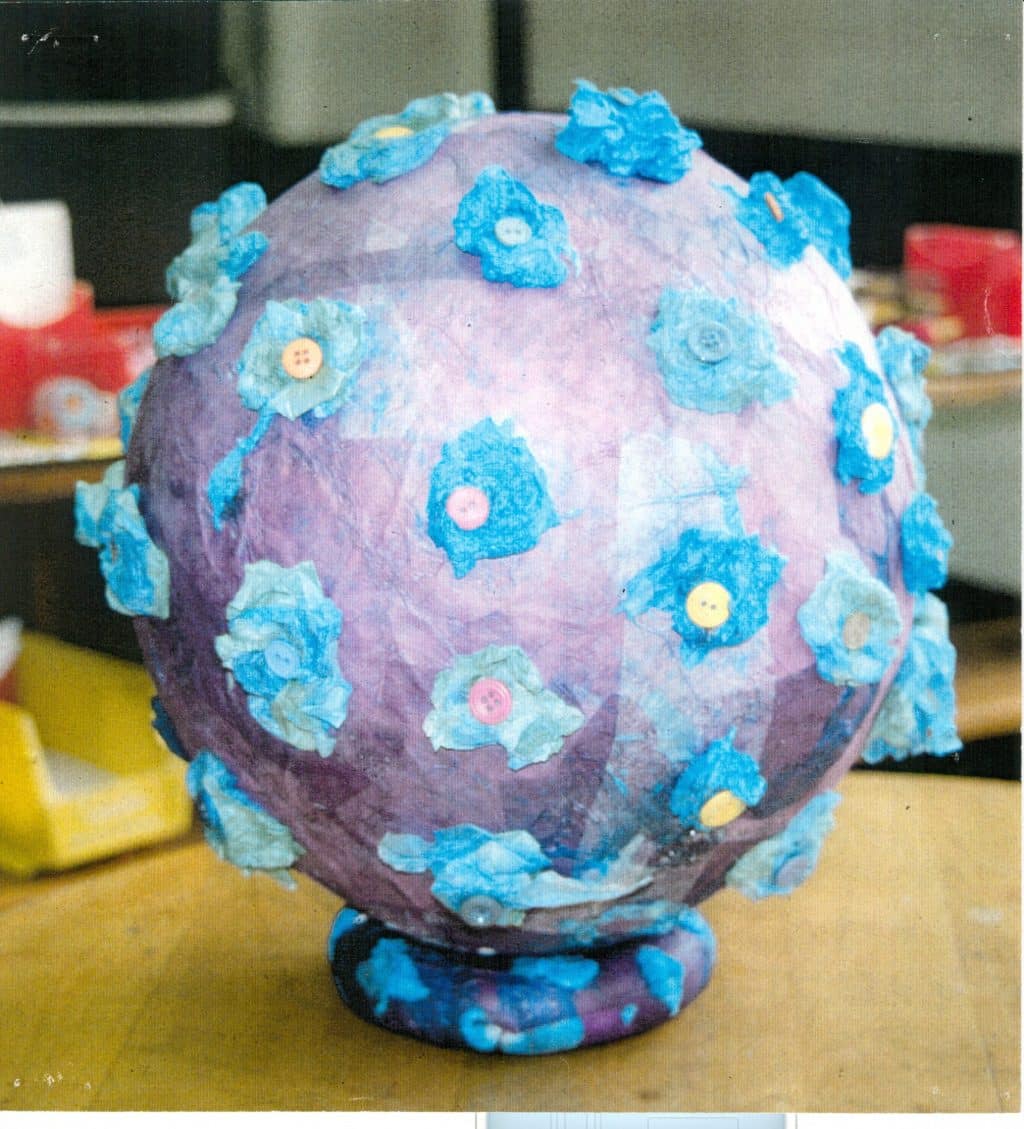 For example, artists are often “commissioned” to make a work of art. If students are asked to provide artwork for any reason, it is just as easy to use the accepted nomenclature to make the announcement. It is then their right to accept or reject the “commission.” When accepting a commission, the children have been empowered to produce that which was asked of them. The children are also accepting the responsibility for meeting their objective in a timely manner. The teacher is also responsible for helping the children meet their obligations.
All artists “document” their work. This can be true for the child’s work, as well. Because good, inexpensive digital cameras are available, any work can be photographed and the record kept for the child’s reference and enjoyment. Collected in a file folder, this documentation becomes the child’s “portfolio.” Of course, the camera can also be available for the child’s creative use.
For example, artists are often “commissioned” to make a work of art. If students are asked to provide artwork for any reason, it is just as easy to use the accepted nomenclature to make the announcement. It is then their right to accept or reject the “commission.” When accepting a commission, the children have been empowered to produce that which was asked of them. The children are also accepting the responsibility for meeting their objective in a timely manner. The teacher is also responsible for helping the children meet their obligations.
All artists “document” their work. This can be true for the child’s work, as well. Because good, inexpensive digital cameras are available, any work can be photographed and the record kept for the child’s reference and enjoyment. Collected in a file folder, this documentation becomes the child’s “portfolio.” Of course, the camera can also be available for the child’s creative use.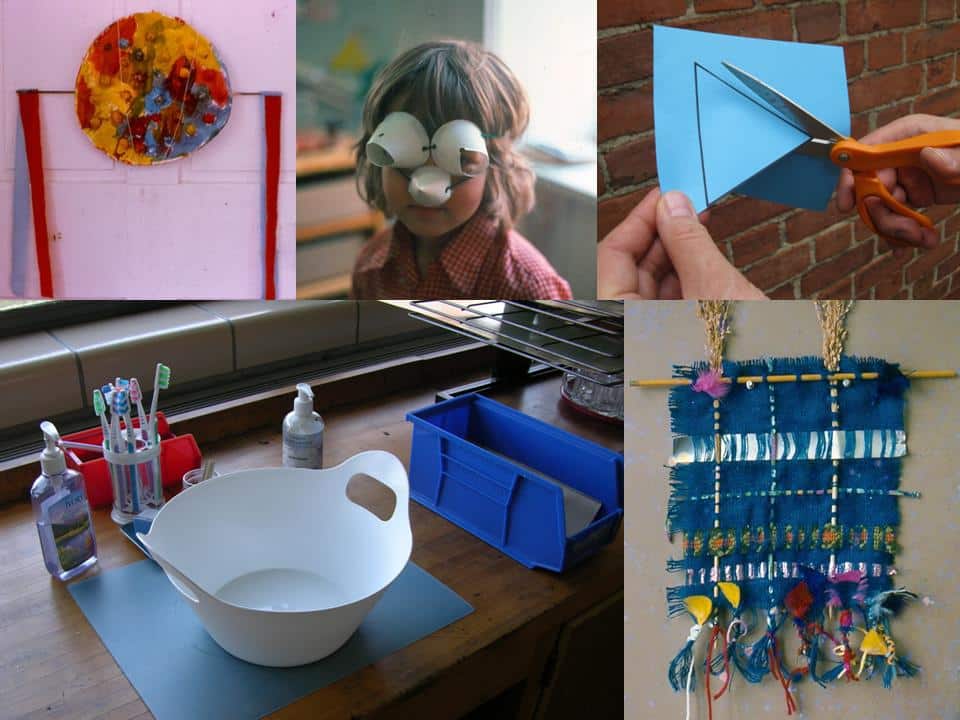 Each part of the MAM curriculum makes a special contribution to the education of an artist. This body of knowledge centers on making art, and teaches the entire breath of this creative discipline.
One section covers the Basic Skills necessary to produce art, identified and isolated so they can be practiced and perfected, just as the skills are in other areas of the curriculum. Practical Life activities for art concentrate on the ability to control water while working and cleaning up. Art Forms are introduced and can be chosen numerous times for self expression. All art starts with an idea. Generating Personal Ideas is composed of motivational techniques that tap into a person’s interests and are designed to stimulate self motivated, original artwork. Understanding Art demystifies how artwork is constructed. The study of The Art Chart introduces an outline of what we investigate in order to analyze a work of art. The Chart organizes the process of art criticism which utilizes higher thinking skills and provides an in-depth study of a work of art. History of Art starts with the general history of the artistic development of children. It starts with scribbling and progresses in general towards realism. The history of adult art needs to start with the history of the child’s culture or civilization which, in America, is the art of Western Civilization. Commercially available timelines are often about world cultures, and do not isolate the Art of Western Civilization or any other civilization. By contrast, the “Fundamental Human Needs” chart is used to structure the study of a particular civilization or culture, giving the arts equal importance as a human endeavor. Indeed, the creative work of designers is found in the production of every material need. The designer must create something that is beautiful and functional. Visual Thinking activities encourage learners to use visual cues as tools for thinking, creating, and solving problems.
Each part of the MAM curriculum makes a special contribution to the education of an artist. This body of knowledge centers on making art, and teaches the entire breath of this creative discipline.
One section covers the Basic Skills necessary to produce art, identified and isolated so they can be practiced and perfected, just as the skills are in other areas of the curriculum. Practical Life activities for art concentrate on the ability to control water while working and cleaning up. Art Forms are introduced and can be chosen numerous times for self expression. All art starts with an idea. Generating Personal Ideas is composed of motivational techniques that tap into a person’s interests and are designed to stimulate self motivated, original artwork. Understanding Art demystifies how artwork is constructed. The study of The Art Chart introduces an outline of what we investigate in order to analyze a work of art. The Chart organizes the process of art criticism which utilizes higher thinking skills and provides an in-depth study of a work of art. History of Art starts with the general history of the artistic development of children. It starts with scribbling and progresses in general towards realism. The history of adult art needs to start with the history of the child’s culture or civilization which, in America, is the art of Western Civilization. Commercially available timelines are often about world cultures, and do not isolate the Art of Western Civilization or any other civilization. By contrast, the “Fundamental Human Needs” chart is used to structure the study of a particular civilization or culture, giving the arts equal importance as a human endeavor. Indeed, the creative work of designers is found in the production of every material need. The designer must create something that is beautiful and functional. Visual Thinking activities encourage learners to use visual cues as tools for thinking, creating, and solving problems.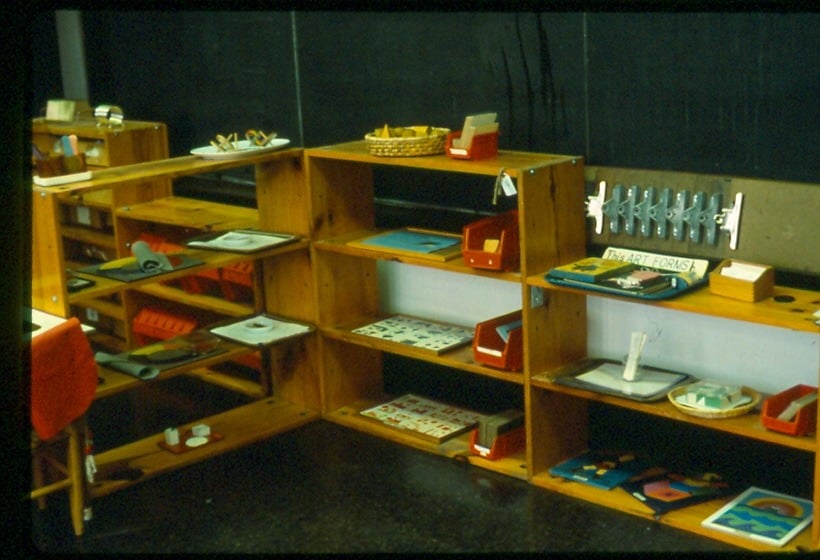
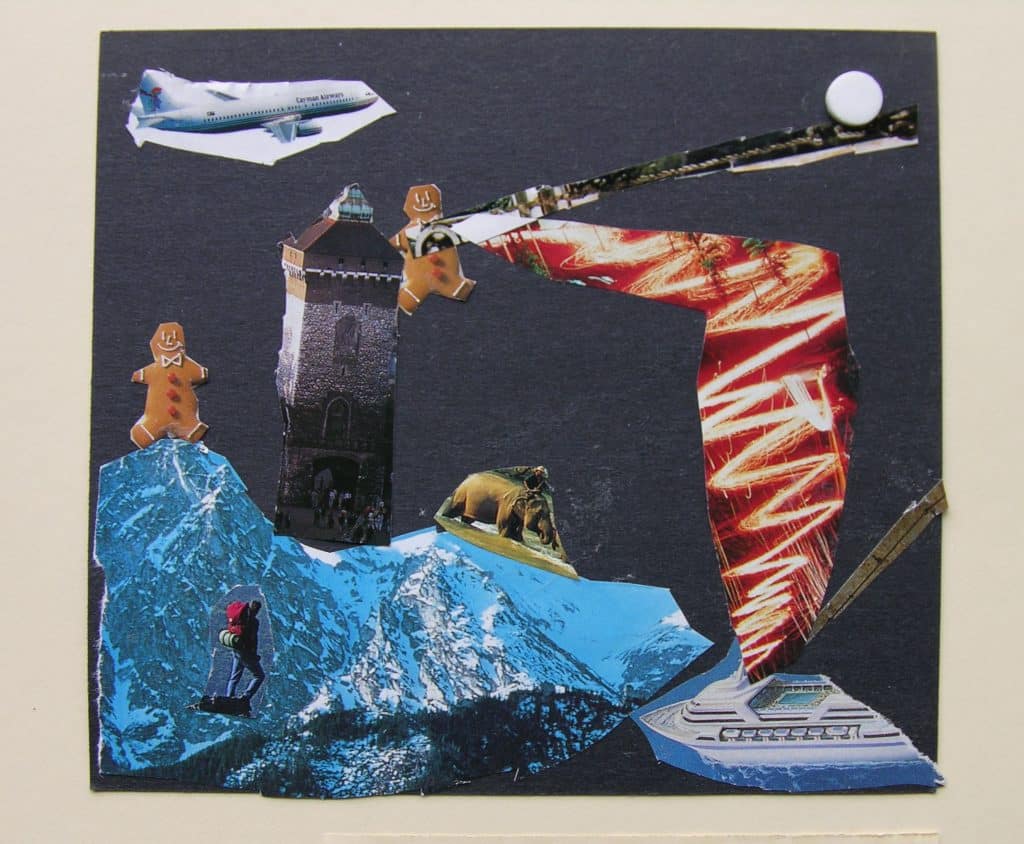 Children’s self motivated art are those pieces of artwork that they conceived and made from their own creative, imaginative volition. The teacher hones the children’s skills by cleverly preparing the environment, but the end result is the opportunity that this structure supplies for the children to create their own work. Once an art form is placed in the environment and appropriate lessons given, the children are free to work independently, which means they are responsible for the idea of the work. Since all art starts with an idea, children are given many lessons and experiences designed to support that effort (See: Generating Personal Ideas).
Children’s self motivated art are those pieces of artwork that they conceived and made from their own creative, imaginative volition. The teacher hones the children’s skills by cleverly preparing the environment, but the end result is the opportunity that this structure supplies for the children to create their own work. Once an art form is placed in the environment and appropriate lessons given, the children are free to work independently, which means they are responsible for the idea of the work. Since all art starts with an idea, children are given many lessons and experiences designed to support that effort (See: Generating Personal Ideas).
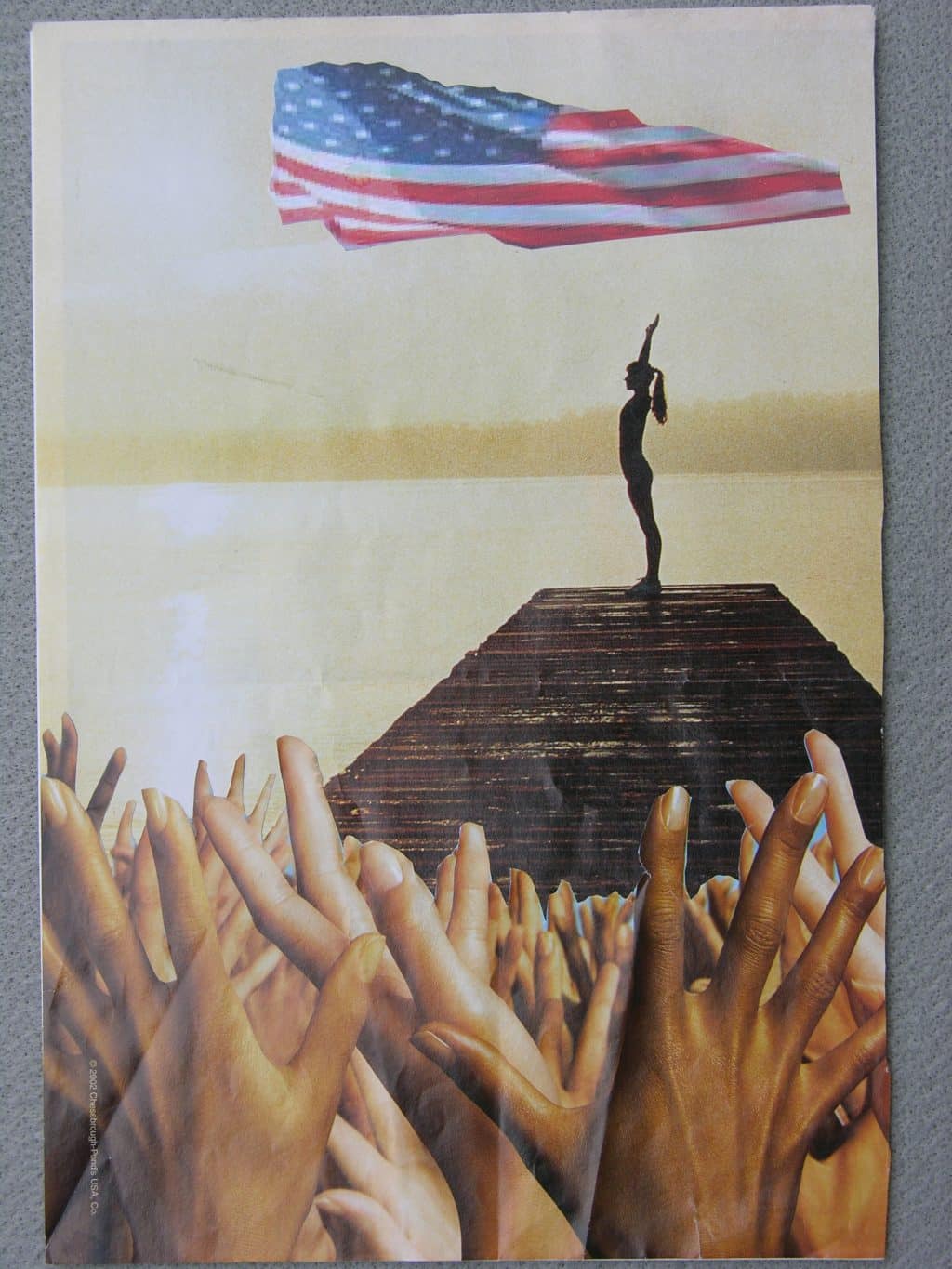 New information is always introduced by a lesson. The work done may be practiced to acquire a skill, perfect a process, or to introduce a new level of difficulty in an already known art form. It could be an entirely new art form. It can even be a lesson in handling a cleanup chore. Once the lesson is given, the activity is open for a child to use. It is also a child’s right to have the lesson repeated, and to be given support as they go through it for the first time. Often this is done by a fellow student.
A teacher-controlled project is always intended to promote the independence of the children and/or to build a new skill for later self-directed use. A teacher-controlled project presents the work with an idea already supplied. If everyone’s artwork has the same or a similar idea, it was a teacher-directed project with the children able to create only within the limits set by the teacher.
New information is always introduced by a lesson. The work done may be practiced to acquire a skill, perfect a process, or to introduce a new level of difficulty in an already known art form. It could be an entirely new art form. It can even be a lesson in handling a cleanup chore. Once the lesson is given, the activity is open for a child to use. It is also a child’s right to have the lesson repeated, and to be given support as they go through it for the first time. Often this is done by a fellow student.
A teacher-controlled project is always intended to promote the independence of the children and/or to build a new skill for later self-directed use. A teacher-controlled project presents the work with an idea already supplied. If everyone’s artwork has the same or a similar idea, it was a teacher-directed project with the children able to create only within the limits set by the teacher.


